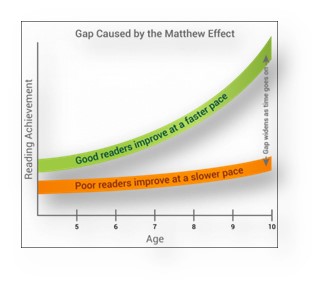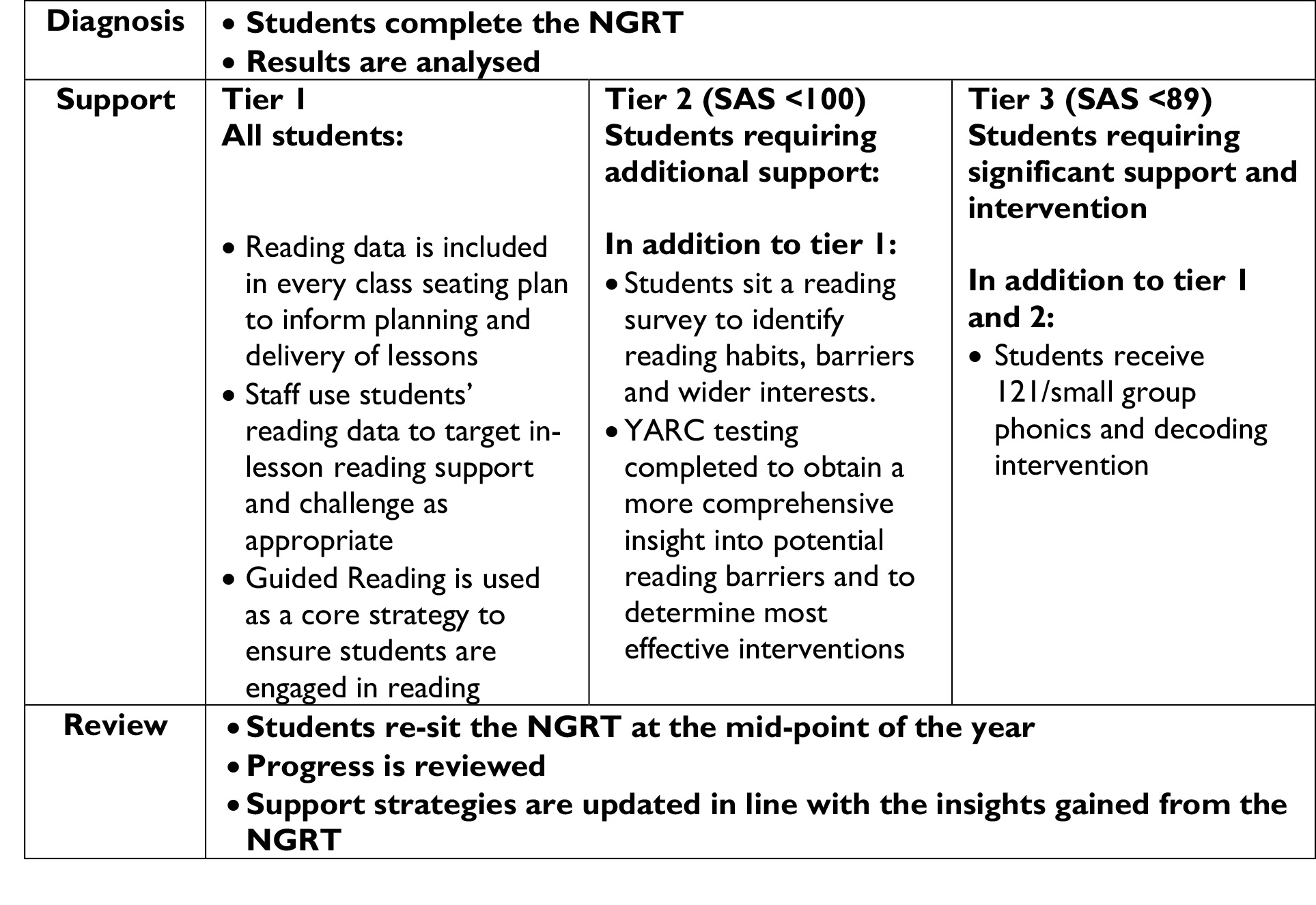Home
Literacy
Introduction
The philosopher Ludwig Wittgenstein defined the fundamental importance of literacy when he wrote “The limits of my language are the limits of my world.” Good literacy (the ability to speak, read and write) allows us to engage with and make sense of the world and society around us. There is an inescapable link between a person’s level of literacy and their life chances. Their health and prosperity in life, whether academic, professional or social will be heavily influenced by their level of literacy. Consequently, the development of a child’s literacy is the responsibility of every teacher.
Evidence Base
The National Literacy Trust estimates that around 7 million adults are functionally illiterate (defined as having a reading age of 11 years or less). In the words of the Trust: “As a child they would not have been able to succeed at school, as a young adult they will be locked out of the job market, and as a parent they will not be able to support their children’s learning”[1]. This then creates an intergenerational cycle of disadvantage in which the children of adults with poor literacy skills often join school with weaker literacy than their peers.
As children progress through school this disadvantage becomes more pronounced and results in a widening attainment gap. Students with good literacy skills progress more quickly while students with weaker literacy skills find it increasingly hard to engage with the curriculum.
The impact of this phenomenon, often referred to as the Matthew Effect[2], is most apparent in the latter stages of the curriculum where measures such as alternative provision, reduced timetables and Level 1 qualifications may be used to ensure students (the majority of whom have weaker literacy skills) remain actively engaged in education. In short, we need to successfully develop the literacy of every student in every subject to keep the curriculum and the world open to them.

What does this look like?
[1] National Literacy Trust: Literacy and Life Expectancy (February 2019)
[2] “For to all those who have, more will be given, and they will have abundance; but for those who have nothing, even what they have will be taken away.” (Matthew 25:29)
If we accept the National Literacy Trust’s definition of literacy as “the ability to read, write speak and listen well”, we must also then accept that developing literacy requires a multifaceted, inter disciplinary approach. Whilst every subject area is responsible for developing students’ vocabulary within their discipline, this should take place as part of an evidence-based whole-school approach.

Prioritise ‘disciplinary literacy’ across the curriculum and provide targeted vocabulary instruction in every subject
Every subject area highlights the key vocabulary for each unit of work and plans when and how this will be introduced to students. This information is then clearly displayed in all medium- and short-term planning materials.
This vocabulary is then included in students’ Knowledge Organisers and/or lesson materials. When key vocabulary is introduced in a lesson, we use a Frayer model (example below) to help students explore the word in greater detail. This aids their vocabulary acquisition and retention.

Provide high quality reading interventions for students who require additional support
Our literacy strategy is underpinned by our vision that every student will read at -or above- an age-appropriate level. Writing, speaking and listening are essential parts of effective communication but a student’s development in these areas is inextricably linked to the breadth and depth of their vocabulary.
We assess students’ reading ability (both decoding and comprehension) through the New Group Reading Test at the start and mid-way point of the school year. The information and insight provided by the NGRT is then analysed to ensure the most appropriate support can be implemented for the student. The most important piece of information derived from the NGRT is a student’s Standardised Age Score (SAS). The SAS is based on the number of questions a student has answered correctly; the score is adjusted for age and placed on a scale that makes a comparison with a nationally representative sample of students of the same age across the UK. The average score is 100. The SAS is key to benchmarking and tracking progress and is the fairest way to compare the performance of different students within a year group or across year groups.[3]
YARC assessments are used as a follow up if the NGRT indicates a potential reading barrier. The York Assessment of Reading for Comprehension is a one-to-one, diagnostic reading assessment that enables teachers to assess pupils’ reading and comprehension skills. Once all of the initial diagnostic assessments are complete, we are able to make informed decisions too effectively support students’ reading development.
Reading Interventions at SDUTC
At SDUTC, we run two targeted English interventions to support and develop students’ reading skills: Fresh Start Phonics and VIPERS.
Fresh Start Phonics
Fresh Start Phonics is a systematic phonics programme designed specifically for secondary-aged students who are struggling with reading. It focuses on helping students understand how letters represent speech sounds, enabling them to decode and read words accurately. Delivered in one-to-one or small group settings, the programme aims to rapidly improve reading accuracy, fluency, and stamina by addressing foundational reading skills in a structured and supportive environment.
VIPERS
While Fresh Start Phonics supports word reading, the VIPERS intervention focuses on reading comprehension—helping students make sense of what they read. VIPERS is an acronym that stands for the key comprehension skills:
- Vocabulary
- Infer
- Predict
- Explain
- Retrieve
- Summarise
Students identified as needing support with comprehension take part in a weekly VIPERS session. These sessions are designed to develop reading fluency, expression, and pace, while also exploring the VIPERS strands through discussion and practice. The goal is to deepen students’ understanding and engagement with texts, enabling them to read more confidently and critically.
Together, these two interventions ensure that all students—whether they need support with decoding or comprehension—have access to the tools and guidance they need to become successful, independent readers.

